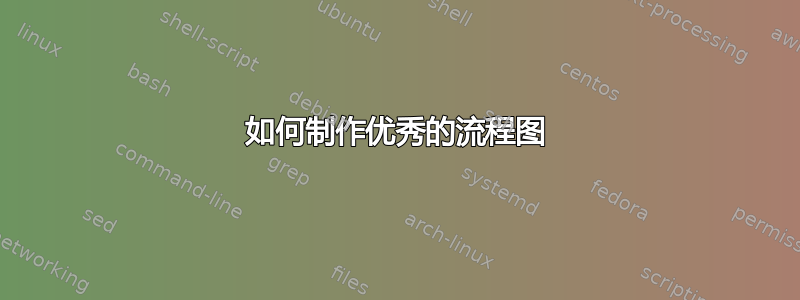
我使用了示例https://texample.net/tikz/examples/consort-flowchart/创建一个流程图。我遇到了一些问题,但看起来不错。
- 文本 1 - 形状必须向上移动,以免与箭头冲突。形状的宽度应与整个页面相同,文本应居中。我可以更改大小,但下面的其他形状也会向左移动。
- 其他箭头应从中间移动到下一个形状。
我该如何解决它?
\documentclass[border=10pt]{standalone}
\usepackage[utf8]{inputenc}
\usepackage{tikz}
\usetikzlibrary{shapes,arrows}
\begin{document}
\centering
\begin{tikzpicture}[auto,
block_top/.style ={rectangle, draw=black, thick, fill=white,
text width=10em, text centered,
minimum height=2em, inner sep=6pt},
block_middle/.style ={rectangle, draw=black, thick, fill=white,
text width=15em, text centered,
minimum height=2em, inner sep=6pt},
block_center/.style ={rectangle, draw=black, thick, fill=white,
text width=8em, text centered,
minimum height=4em},
block_left/.style ={rectangle, draw=black, thick, fill=white,
text width=16em, text ragged, minimum height=4em, inner sep=6pt},
block_lost/.style ={rectangle, draw=black, thick, fill=white,
text width=16em, text ragged, minimum height=3em, inner sep=6pt},
line/.style ={draw, thick, -latex', shorten >=0pt}]
% outlining the flowchart using the PGF/TikZ matrix funtion
\matrix [column sep=5mm,row sep=3mm] {
% enrollment - row 1
\node [block_top] (D) {TEXT 1};\\
% enrollment - row 2
\node [block_center] (DL) {TEXT 2};
& \node [block_center] (DC) {TEXT 3};
& \node [block_center] (DB) {TEXT 4};\\
% follow-up - row 3
\node [block_middle] (I) {TEXT 5};
& \node [block_middle] (L) {TEXT 6}; \\
% follow-up - row 4
\node [block_center] (IG) {TEXT 7) };
& \node [block_center] (IS) {TEXT 8)};
& \node [block_center] (LS) {TEXT 9};
& \node [block_center] (LO) {TEXT 10};\\
};% end matrix
% connecting nodes with paths
\begin{scope}[every path/.style=line]
\path (D) -| (DL);
\path (D) -| (DC);
\path (D) -| (DB);
\path (DL) -- (I);
\path (DB) -- (L);
\path (DC) -- (L);
\path (DC) -- (I);
\path (DL) -- (I);
\path (I) -- (IG);
\path (I) -- (IS);
\path (L) -- (LS);
\path (L) -- (LO);
\end{scope}
\end{tikzpicture}
\end{document}
干杯
答案1
我没有看到矩阵结构,而是节点级别取决于下方节点的位置。因此我从下往上开始。
- 将底部的节点均匀分布。
- 将上一行中的节点放置在其下一行的节点之间。
- 将中心节点放置在第二行,位于下方节点和中心节点左侧和右侧节点之间的中间上方。
- 将顶部节点定位在第二行的中心节点上方。
\documentclass[border=10pt]{standalone}
\usepackage[utf8]{inputenc}
\usepackage{tikz}
\usetikzlibrary{positioning,shapes,arrows,calc}
\begin{document}
\begin{tikzpicture}[auto,
block/.style={rectangle, draw=black, thick, fill=white,
text width=#1, text centered,
minimum height=2em, inner sep=6pt},
block_top/.style = {block=40em},
block_middle/.style = {block=15em},
block_center/.style = {block=8em,minimum height=4em},
block_left/.style ={block=16em,text ragged,minimum height=4em},
block_lost/.style ={block=16em,text ragged,minimum height=3em},
line/.style ={draw, thick, -latex', shorten >=0pt, rounded corners}
]
% follow-up - row 4
\node [block_center] (IG) {TEXT 7};
\node [block_center,right=of IG] (IS) {TEXT 8};
\node [block_center,right=of IS] (LS) {TEXT 9};
\node [block_center,right=of LS] (LO) {TEXT 10};
% follow-up - row 3
\coordinate (IGIS) at ($(IG.north)!0.5!(IS.north)$);
\node [block_middle,above=of IGIS] (I) {TEXT 5};
\coordinate (LSLO) at ($(LS.north)!0.5!(LO.north)$);
\node [block_middle,above=of LSLO] (L) {TEXT 6}; \\
% enrollment - row 2
\coordinate (IL) at ($(I.north)!0.5!(L.north)$);
\node [block_center,above=of IL] (DC) {TEXT 3};
\node [block_center] (DL) at (IG|-DC) {TEXT 2};
\node [block_center] (DB) at (LO|-DC) {TEXT 4};
% enrollment - row 1
\node [block_top,above=of DC] (D) {TEXT 1};
\begin{scope}[every path/.style=line]
\path (D) -- +(0,-0.8) -| (DL);
\path (D) -- (DC);
\path (D) -- +(0,-0.8) -| (DB);
\path (DL) -- (I);
\path (DB) -- (L);
\path (DC) -- (L);
\path (DC) -- (I);
\path (DL) -- (I);
\path (I) -- (IG);
\path (I) -- (IS);
\path (L) -- (LS);
\path (L) -- (LO);
\end{scope}
\end{tikzpicture}
\end{document}
答案2
作为森林:
\documentclass[border=3.141592]{standalone}
\usepackage[edges]{forest}
\usetikzlibrary{arrows.meta,
shadows}
\begin{document}
\begin{forest}
for tree = {
% nodes
draw, semithick,
fill=white,
drop shadow,
text width=6em,
text badly centered,
% tree
grow = south,
edge = {-Straight Barb, semithick},
anchor = north,
forked edge,
l sep = 8mm,
fork sep = 3.5mm,
where level = 2{s sep=2mm}{s sep=6mm},
% extry connection
/tikz/arr/.style = {draw=red, -Straight Barb, semithick},
}% ed of "for tree"
[ Text 1\\ (root)
[Tex 2
[Text 5, name=n12
[Text 7]
[Text 8]
]
]
[Text 3, name=n21
[Text 6, name=n22
[Text 9]
[Text 10]
]
]
[Tex 4, name=n31]
]
\draw[arr] ([xshift=-1em] n21.south) -- ++ (0,-3.5mm) -| ([xshift=1em] n12.north);
\draw[arr] (n31.south) -- ++ (0,-3.5mm) -| ([xshift=1em] n22.north);
\end{forest}
\end{document}




